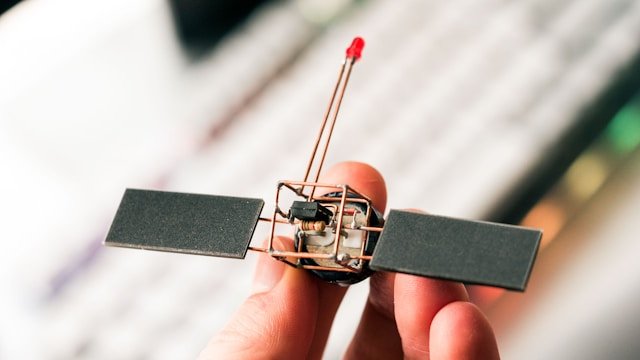Emerging Trends in European Aerospace: Opportunities for Tomorrow’s Workforce
- One - The Rise of European Small Satellites Prowess
- Two - Sustainability in Eurozone Aerospace
- Three - Advanced Manufacturing and Robotics
- Four - The Importance of Digital Transformation
- Five - Space Traffic Management: An Emerging Problem

The aerospace sector in Europe is evolving rapidly, driven by technological advances and a push towards sustainability. This evolution presents new career opportunities and demands for skills adaptation. For professionals eyeing a sectoral shift or those entering the field, understanding these trends is crucial. However, recruiters – both in-house and external – need to be aware of sectoral developments. In this article, we will give a brief overview of how the space and satellite sector is looking in mid-2024 with a brief rundown of the six big tech developments so far.
One – The Rise of European Small Satellites Prowess
The proliferation of small satellites is reshaping the aerospace landscape. Europe has increasingly invested in CubeSats and other miniaturised satellite technologies, facilitating a surge in startups funding and European Space Agency funded projects all focused on small-scale space innovation. The European Space Agency (ESA)1 has actively supported such initiatives, aiming to reduce launch costs and open up new possibilities in space support services. For recruiters in this field, finding candidates with skills in systems engineering, telecommunications, and remote sensing are particularly in demand.
Two - Sustainability in Eurozone Aerospace
Sustainability is becoming a cornerstone of aerospace development. Initiatives like the Clean Sky program2 under Horizon Europe are driving the transition towards greener aviation technologies. This includes the development of electric aircraft and improvements in fuel efficiency technologies and therein emissions reduction. However, recruitment practitioners are finding it difficult to source human talent with expertise in environmental engineering, sustainable design, and alternative energies with a premium available on benefits packages for associated roles.
Three - Advanced Manufacturing and Robotics
Advanced manufacturing techniques and processes, including 3D printing and robotics, have become standard practice in the aerospace sector. These technologies are crucial in constructing lightweight aerospace components more efficiently and at pace – whilst also helping to reduce costs. The European Commission’s3 focus on enhancing digital industrial platforms and tools showcases the growing need for skills in advanced manufacturing processes, robotics programming, and materials science.
Four – The Importance of Digital Transformation
Digital transformation is pivotal in the aerospace sector. With the implementation of AI, big data analytics, and IoT, companies are optimising design, maintenance, and operations. The ESA’s investment in digital technologies indicates a robust demand for IT professionals skilled in cybersecurity, software development, and data analysis to support these advancements.
Five - Space Traffic Management: An Emerging Problem
As space activities increase, so does the need for effective space traffic management. The European Union’s space surveillance and tracking (EU SST)4 program highlights the necessity to manage the congestion of satellites and space debris effectively. Professionals with a background in aerospace engineering, operations research, and computer simulations are likely to find growing job opportunities in this emerging field.
The European aerospace industry’s trajectory points towards a future rich with opportunities for skilled professionals – but a challenge for recruitment professionals nonetheless. Whether it’s the rise of small satellites, the push for sustainability, the adoption of advanced manufacturing, the wave of digital transformation, or the critical need for space traffic management, each trend offers a unique pathway for career growth and likewise challenges in terms of candidate sourcing.
External Links:
1. ESA: CubeSats
2. Clean Sky 2
3. European Commission: Commission presents new initiatives boosting European industrial leadership in advanced materials
4. Benefits, Challenges and Impact of e-Recruitment
5. EU SST












